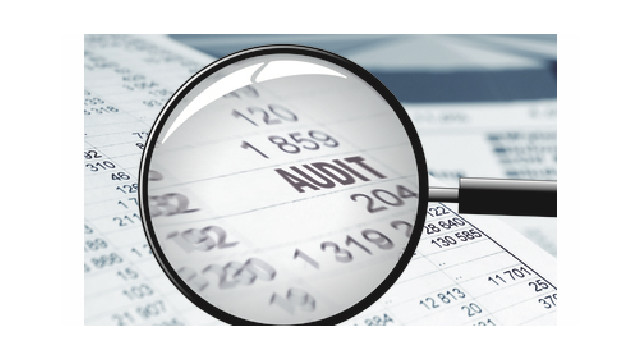Accounting
Don’t Wait To Remediate: Taking A Proactive Approach as PCAOB Inspection Reports Lag
Apr. 09, 2021

Is your firm one of the hundreds waiting for the issuance of a Public Company Accounting Oversight Board (PCAOB) inspection report? You are in good company as more firms join this group weekly.
Since peaking at 344 inspection reports in 2011, the PCAOB’s pace for issuing inspection reports slowed to a trickle of only 46 reports in 2020. While an understandable lag exists between the time an inspection is performed and when the corresponding report is issued, the length of that lag varies over time as inspection focus, auditing standards, and PCAOB priorities change. In fact, the record-breaking number of reports issued in 2011 was a product of efforts to clear the backlog of older inspection reports.
In recent speeches, PCAOB Board Members have referenced the PCAOB’s inspection transformation activities which include how inspections are performed, what data is collected, how inspection results are reported, and how to drive impactful remedial improvements. Beginning with 2018 inspection reports for annually inspected firms and 2019 reports for all other firms, the format of the reports has changed substantially. These changes were made to enhance readability and make the information in inspection reports more digestible and accessible to users.
To date, the PCAOB issued 173 reports from inspections conducted in 2018, but only 22 reports from 2019; a decrease that is attributed to the change in the report format. These figures suggest approximately 150 reports from 2019 inspections remain to be “recast” in the new report format before their issuance. This backlog is further exacerbated by all inspections conducted in 2020 and 2021.
This slowdown in report issuance is creating several complications. As originally contemplated in the Sarbanes Oxley Act, a firm subject to triennial inspections would complete its cycle of inspection, reporting and remediation within a three-year period. The delays in reporting inspection results creates an “overlap” of inspection activities from one triennial cycle (inspection, reporting and remediation) to the next. Thus, firms will be conducting audit procedures subject to the next inspection before the Board concludes on the firm’s remedial actions from the prior inspection.
Firms continue to have a 12-month period to remediate quality control (QC) criticisms from inspection reports before those criticisms are made public. However, overlapping inspection cycles may cause firms to have QC criticisms repeated in reports that were subsequently remediated. In 2013, the PCAOB issued guidance on “repeated or persistent” criticisms. It has not, however, issued any guidance on how it will evaluate repeated criticisms due to the current overlap from an inspection or enforcement standpoint.
After a history of issuing inspection reports on an almost monthly basis through 2019, the PCAOB issued inspection reports only lightly and sporadically in 2020. The Board issued only 17 reports on five dates prior to September 2020 before issuing 29 reports in December 2020. This activity reflects the PCAOB’s push to issue reports during calendar 2020— a push that is likely to continue in 2021.
This push, coupled with the substantial backlog of reports, will create a great deal of strain on the PCAOB staff evaluating firms’ remedial actions. The PCAOB has dedicated inspection staff to evaluate firm remediation submissions. Under normal circumstances, this staff is available to review drafts of remediation submissions and provide feedback to firms with enough time and in enough detail that firms can amend their remedial responses to ensure a more favorable determination from the Board. When the report floodgates open at the PCAOB, a greater number of firms will be in their 12-month remediation period concurrently. Unless the PCAOB substantially increases its remediation staff resources, the allocation of remedial resources available to individual firms will be reduced.
Make no mistake: a delayed inspection report can still have a negative impact on a firm and its auditors, particularly if “repeated or persistent” criticisms are identified. Given these circumstances, audit firms are well-served by using this lull in PCAOB reporting activity to implement the following:
- Don’t wait for the issuance of the final inspection report to begin remediation. Get ahead of the curve by planning how to address the QC criticisms in your firm’s draft inspection report.
- Analyze the root cause of each engagement deficiency noted in the inspection. The engagement deficiencies will likely give rise to the QC criticisms in the final report, so identify the root causes and develop actions to address those root causes now.
- Most important, provide a draft remediation response to the PCAOB staff early in the remediation period. Feedback from the remediation staff is one of the most important resources available to PCAOB registered firms; don’t squander this opportunity. However, given that PCAOB resources may be stretched extremely thin, don’t rely exclusively on regulator input as it may not be provided in a timely manner. Instead, consider an objective third-party review of your root cause analysis or remediation plan as further evidence of your firm’s commitment to strengthen its system of QC.
Firms must act more quickly on remedial actions in 2021 than they have in the past. With the unprecedented backlog in inspection reports, the PCAOB remediation staff will be inundated with questions and draft responses later this year. By taking effective remedial actions early in the remediation period, your firm can get ahead of the curve.
=======
Ellen Graper is a partner at global advisory firm StoneTurn and former PCAOB regulator.
